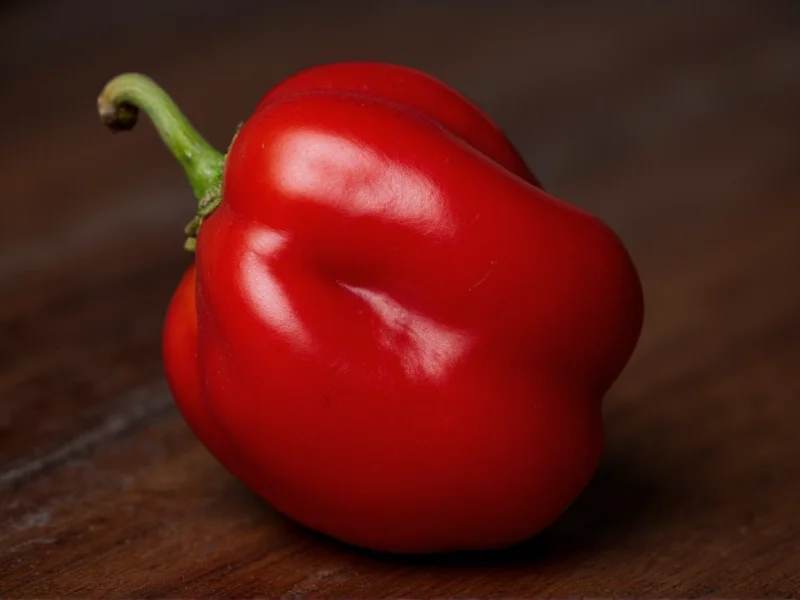Understanding the Scoville scale measurement for ghost peppers provides crucial context for anyone working with or consuming these intensely hot chilies. The Scoville scale, developed by pharmacist Wilbur Scoville in 1912, measures the concentration of capsaicinoids—the compounds responsible for a pepper's heat—in Scoville Heat Units (SHU). Originally determined through human taste testing, modern measurements use high-performance liquid chromatography (HPLC) for precise capsaicin quantification.
Ghost Pepper: Scientific Classification and Origin
The ghost pepper, scientifically known as Capsicum chinense 'Bhut Jolokia,' originated in the northeastern regions of India, particularly Assam, Nagaland, and Manipur. Despite its name suggesting Chinese origin, chinense refers to the "of China" misnomer common in early botanical classification. These peppers earned their "ghost" name ("bhut" in Assamese) because their intense heat seemingly sneaks up on you like a ghost.
Precise Scoville Measurement Range
When the ghost pepper was officially recognized by Guinness World Records in 2007 as the world's hottest pepper, laboratory tests confirmed its heat level at approximately 1,001,304 SHU. However, multiple factors influence the actual heat measurement:
- Geographical variation: Soil composition, climate, and growing conditions significantly impact capsaicin production
- Ripeness: Fully mature red ghost peppers typically register higher on the Scoville scale than green varieties
- Individual variation: Even within the same plant, heat levels can differ between peppers
- Testing methodology: Different laboratories may produce slightly varying results
| Pepper Variety | Scoville Heat Units (SHU) | Heat Comparison to Ghost Pepper |
|---|---|---|
| Ghost Pepper (Bhut Jolokia) | 855,000-1,041,427 | 1x (baseline) |
| Habanero | 100,000-350,000 | 2-8x milder |
| Cayenne | 30,000-50,000 | 17-35x milder |
| Serrano | 10,000-23,000 | 37-85x milder |
| Trinidad Moruga Scorpion | 800,000-2,000,000 | Comparable to hotter |
| Carolina Reaper | 1,400,000-2,200,000 | 1.3-2x hotter |
Practical Implications of 1 Million Scoville Units
Experiencing 1,000,000 SHU isn't merely about taste—it triggers physiological responses. When consuming a ghost pepper, capsaicin binds to TRPV1 receptors (pain and heat sensors) throughout the mouth and digestive tract. This binding creates an intense burning sensation that typically peaks within 30-60 seconds and can last 15-30 minutes.
Common physical reactions include:
- Immediate intense burning sensation throughout the mouth
- Profuse sweating and facial flushing
- Runny nose and watery eyes
- Nausea or gastrointestinal distress in sensitive individuals
- Temporary numbness after the initial burning subsides
Safety Considerations for Handling Ghost Peppers
Working with ghost peppers requires proper precautions due to their extreme heat level. Capsaicin can transfer from hands to eyes or other sensitive areas, causing severe irritation. Professional chefs and home cooks should:
- Wear nitrile gloves when handling ghost peppers
- Avoid touching face or eyes during preparation
- Use proper ventilation when cooking with ghost peppers
- Start with small quantities when incorporating into recipes
- Have dairy products (milk, yogurt) available to neutralize capsaicin
It's important to note that ghost peppers are significantly hotter than most commercially available hot sauces. A single ghost pepper contains enough capsaicin to season an entire pot of curry, making precise measurement essential for culinary applications.
Common Misconceptions About Ghost Pepper Heat
Several myths persist about ghost pepper Scoville ratings:
- Myth: Ghost peppers are the hottest peppers available
Fact: While they held the Guinness World Record from 2007-2011, several varieties now exceed their heat level - Myth: All ghost peppers measure exactly 1,000,000 SHU
Fact: Natural variation means individual peppers can range from 855,000 to over 1,041,000 SHU - Myth: The seeds contain most of the heat
Fact: The highest capsaicin concentration is in the white pith (placenta) surrounding the seeds - Myth: Water effectively cools the burn
Fact: Capsaicin is oil-soluble, so dairy products work better than water for relief
Scientific Measurement Evolution
While the Scoville Organoleptic Test was the original method for determining pepper heat, modern laboratories now use High-Performance Liquid Chromatography (HPLC). This scientific approach precisely measures capsaicinoid concentration, which is then converted to Scoville units using a mathematical formula (1 part per million capsaicin = 15 SHU).
This more accurate measurement method explains why earlier ghost pepper heat claims varied widely—some vendors exaggerated ratings for marketing purposes. Reputable sources now rely on laboratory-verified measurements rather than subjective taste tests.
Ghost Pepper in Culinary Context
Despite their extreme heat, ghost peppers offer complex flavor profiles beyond just spiciness. They possess distinct smoky, fruity notes that professional chefs utilize in carefully measured quantities. When used appropriately, ghost peppers can enhance dishes without overwhelming them with heat.
Culinary applications include:
- Specialty hot sauces where heat is balanced with complementary flavors
- Curry dishes where the pepper's heat integrates with other spices
- Pepper-infused oils for controlled heat application
- Preserves and chutneys that mellow the heat while preserving flavor
For home cooks experimenting with ghost peppers, starting with 1/8 to 1/4 teaspoon of finely minced pepper per dish serves as a safe baseline. Remember that heat intensifies during cooking, so it's always better to add gradually rather than over-spice initially.











 浙公网安备
33010002000092号
浙公网安备
33010002000092号 浙B2-20120091-4
浙B2-20120091-4